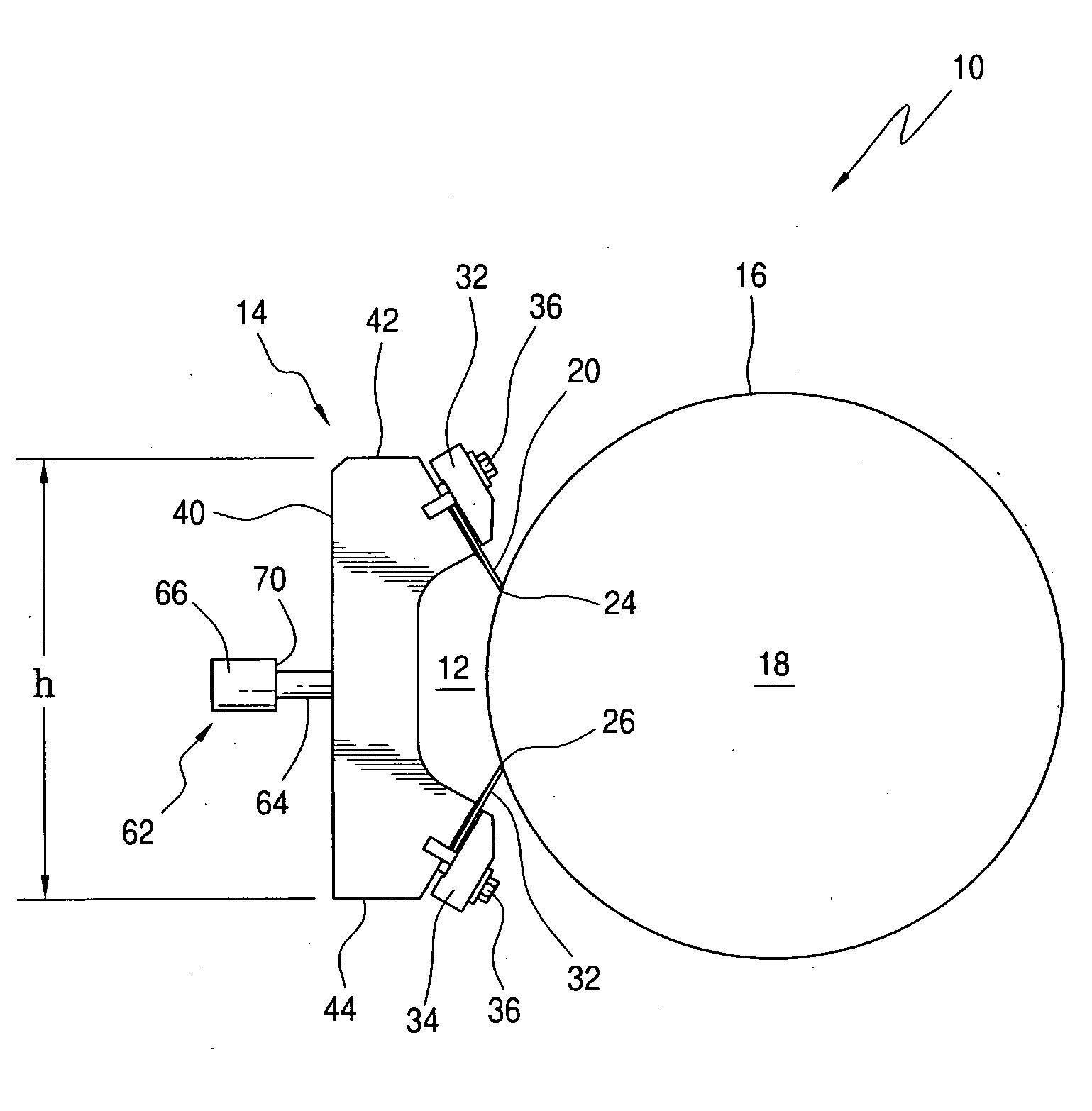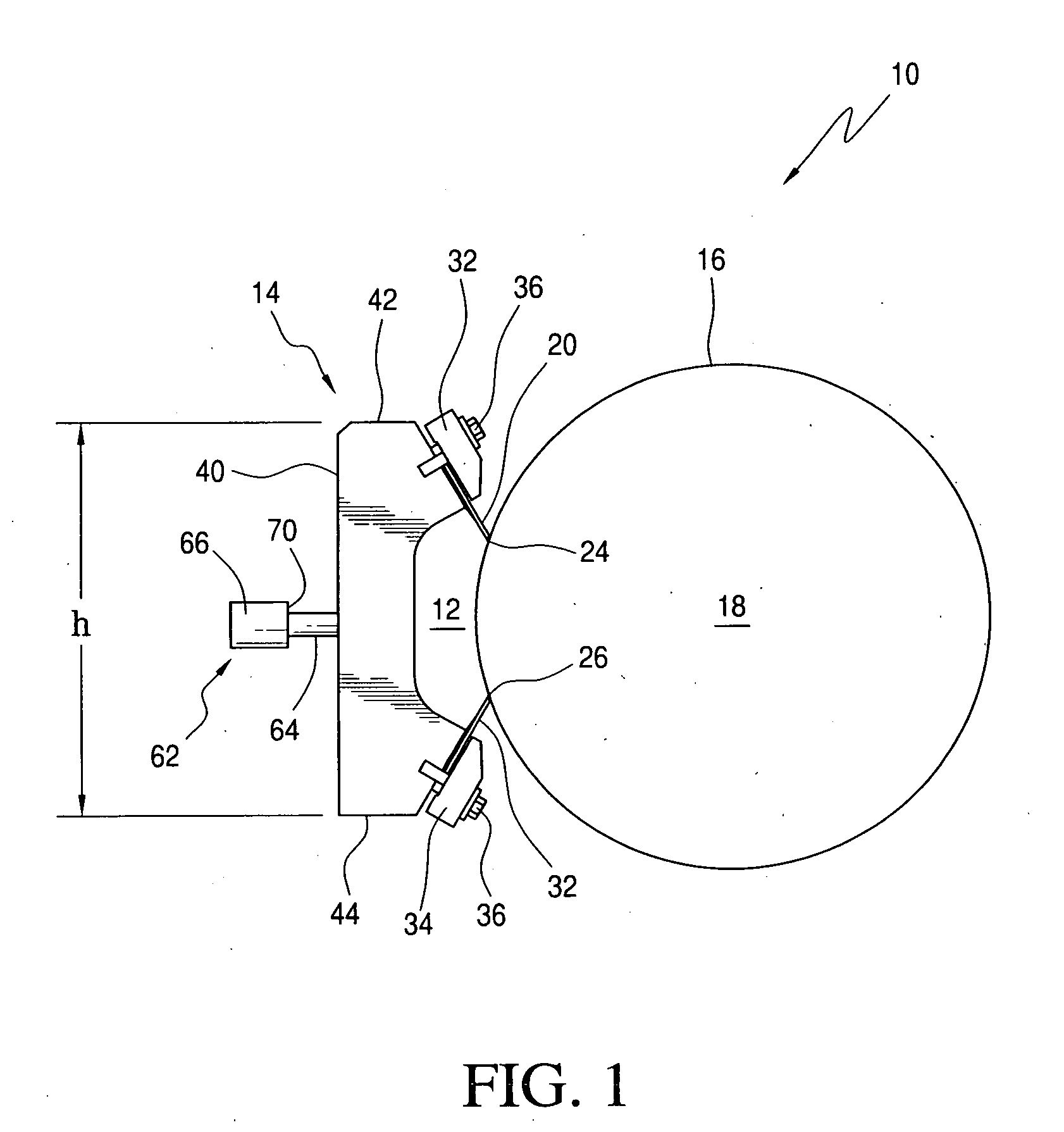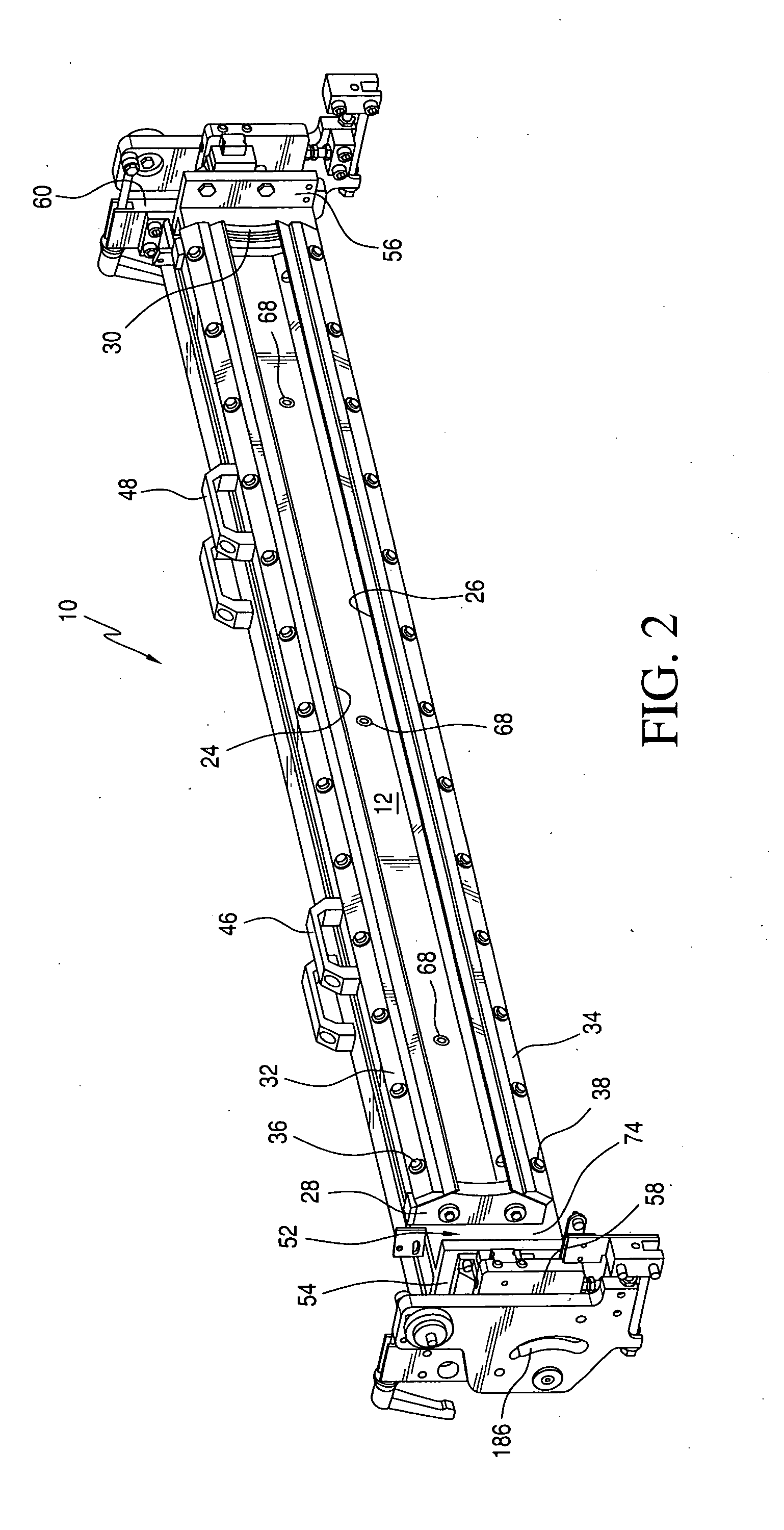Doctor blade system
a blade system and blade technology, applied in the field of blade systems, can solve the problems of reducing affecting the quality of the resultant printed product, and achieving only through the use of costly and complicated coatings, etc., to achieve uniform load application, facilitate linear adjustment, and great structural rigidity
- Summary
- Abstract
- Description
- Claims
- Application Information
AI Technical Summary
Benefits of technology
Problems solved by technology
Method used
Image
Examples
Embodiment Construction
[0038]Referring initially to FIG. 1, and taken in conjunction with FIG. 2, there may be seen, generally at 10, a preferred embodiment of a doctor blade system in accordance with the present invention. It will be understood that doctor blade system, generally at 10, is intended for use primarily in a flexographic printing system or in other generally well known printing systems. In such systems printing ink is supplied to an ink reservoir 12 in a doctor blade chamber, generally at 14. That ink is then transferred to the surface 16 of an ink roller, such as an anilox roller 18.
[0039]As is well known in the art, a doctor blade chamber, generally at 14 includes a working doctor blade 20 and a closing doctor blade 22 whose outer edges 24; 26, respectively, engage the surface 18 of the anilox roller 18. Suitable end plates 28 and 30, as seen more clearly in FIG. 2 cooperate with the working doctor blade 20 and the closing doctor blade 22 to define the ink reservoir 12. Seals are placed in...
PUM
 Login to View More
Login to View More Abstract
Description
Claims
Application Information
 Login to View More
Login to View More - R&D
- Intellectual Property
- Life Sciences
- Materials
- Tech Scout
- Unparalleled Data Quality
- Higher Quality Content
- 60% Fewer Hallucinations
Browse by: Latest US Patents, China's latest patents, Technical Efficacy Thesaurus, Application Domain, Technology Topic, Popular Technical Reports.
© 2025 PatSnap. All rights reserved.Legal|Privacy policy|Modern Slavery Act Transparency Statement|Sitemap|About US| Contact US: help@patsnap.com



